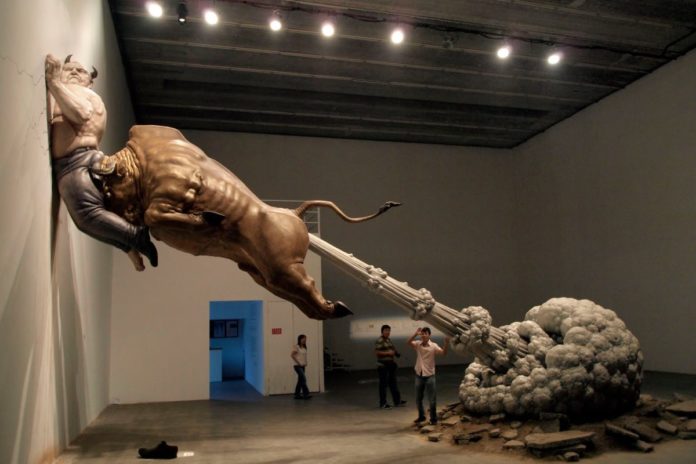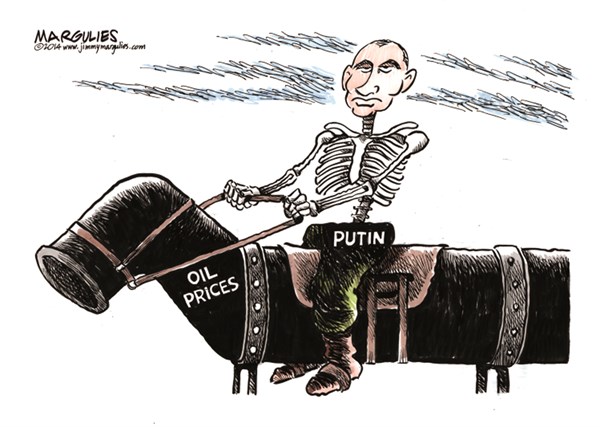
Back in Aril 2015 we predicted that oil prices would fall: http://anonhq.com/price-oil-continue-fall/
On December 11, as oil sank below $38 a barrel for the first time in seven years, stock markets on both sides of the Atlantic plunged deeply. On December 14, the global benchmark of Brent crude was down 2% at $37.24, after falling to as low as $36.33 a barrel – it’s weakest since December 2008. A fall below $36.20, will take oil prices down to levels last seen in 2004. US benchmark West Texas Intermediate (WTI) traded at $36.41, after falling to as low as $34.53 a barrel – last witnessed in 2009. A year ago, Brent and WTI were trading at around $60 a barrel, and during early summer 2014, above $100. In London, the FTSE 100 ended the day 1.3% lower at 5874.06, its lowest level since early December 2012.
Why is oil falling?
Crude has slumped dramatically since the OPEC opted against cutting its output levels on December 4 – instead of maintaining a certain price for oil (the oil producing countries agreed to raise their production ceiling from 30 million barrels per day, up to 31.5 million barrels per day) – to keep their year-old market share strategy to crush non-OPEC production.
Apart from the OPEC’s overproduction, there’s another factor behind the new drop in oil prices – warm weather. El Nino can bring milder winter weather to the northern part of the US; in New York and Chicago, December temperatures are already above normal, reducing the demand for heating oil.
“The fact that you can almost go swimming in New York City right now is horrible. Absolutely horrible [for heating oil demand]. To me, that’s the straw that is breaking the camel’s back. We’re ground zero for fuel oil demand… If OPEC’s disorganization continues and temperatures stay mild, that could add further pressure to prices,” said Jay Hatfield, co-founder and president of Infrastructure Capital Advisors and portfolio manager of the InfraCap Active MLP exchange-traded fund.
Nasdaq observes:
The oil market remains globally oversupplied, with producers in the US, Saudi Arabia and elsewhere continuing to pump at full tilt. Meanwhile, seasonal demand for heating oil has ebbed due to moderate temperatures in the US and Europe, keeping inventories of refined products higher than normal.
What’s the bad news?
The world is awash with oil – last week, US crude inventories rose by 1.6m barrels to 489.4m. China has been soaking up some 250,000 b/d for its strategic reserves, preventing a collapse of the market. Goldman Sachs has warned that oil could fall to $20, if the world runs out of capacity to store unwanted supply. Bank of America has cautioned the risk of a “full-blown price war” within OPEC itself, as Saudi Arabia and Iran fight out a bitter strategic rivalry through the oil market.
Low crude prices won’t effect Russian oil output – experts https://t.co/wGav4Xo91z pic.twitter.com/lw4M6YkkQS
— RT (@RT_com) December 14, 2015
Meanwhile, Russia is drawing up plans based on a price band that fluctuates between $40 and $60 as far out as 2022 – which would not only have devastating implications for OPEC, it would also spell disaster for the North Sea producers, Brazil’s off-shore projects, and heavily indebted Western producers.
Is there a conspiracy to bring the price of oil down?
The New York Times notes:
There are a number of conspiracy theories floating around. Even some oil executives are quietly noting that the Saudis want to hurt Russia and Iran, and so does the United States — motivation enough for the two oil-producing nations to force down prices. Dropping oil prices in the 1980s did help bring down the Soviet Union, after all.
As the price of crude slips to the lowest in almost 7 years, oil traders are making hay https://t.co/3h8zwt5tD1 pic.twitter.com/j2rBH8VDtI
— Bloomberg Business (@business) December 14, 2015
Will oil rise again?
“When we look at 2016, I don’t see many reasons why we can see upward pressure on the prices…Demand is weaker and we may well see Iran come back (to the market) and there will be a lot of oil. So 2016 may well be another year with lower prices and this will have implications of course for investments in the oil sector,” Fatih Birol, IEA’s executive director, said in Paris last week.
The Telegraph opines:
Just as fast as crudes prices have fallen over the past year or so, they could easily spring back again. One reason is that these recent drops reflect supply patterns that are driven almost entirely by geo-politics – and geo-politics can quickly shift.
Sources:
http://www.nasdaq.com/markets/crude-oil.aspx?timeframe=1y
http://www.wsj.com/articles/oil-prices-still-under-pressure-wti-falls-below-35-1450094180
This Article (Stock Markets Crash As Oil Prices Hover Near 11-Year Lows) is free and open source. You have permission to republish this article under a Creative Commons license with attribution to the author and AnonHQ.com.







oil overproduction isn’t a result of traditional sources and imports – it is Fracking and new oil production worldwide, dominated by North America – which has been deregulated in absurd ways that ruin land, poison vast quantities of fresh water and degrade air quality. If fracking is properly regulated, and companies had to pay for the water they use, proper management of the land they destroy, and proper filtration of the poison they emit into the environment – Fracking would be economically forced out existence!… which is happening anyway as a result of standard worldwide oil production. The oil industry is (probably) the most destructive money generator in the world right now, and the fallacy that oil will run out… isn’t going to change this industry. new technologies that keep finding ways to produce more oil will burn the habitable layer of atmosphere to a cinder before all the oil is gone! the conversation shouldn’t be about oil prices tanking the economy. the conversation should be about phasing this poisonous economic segment out of existence for sake of future generations.